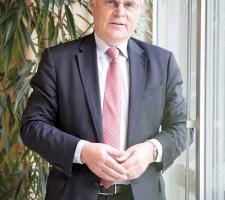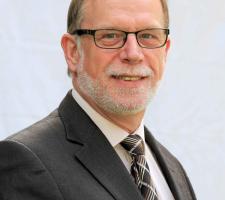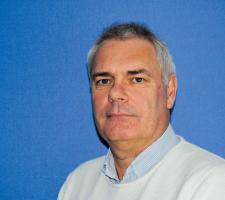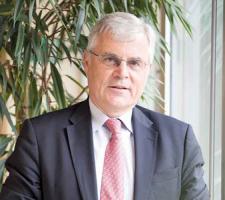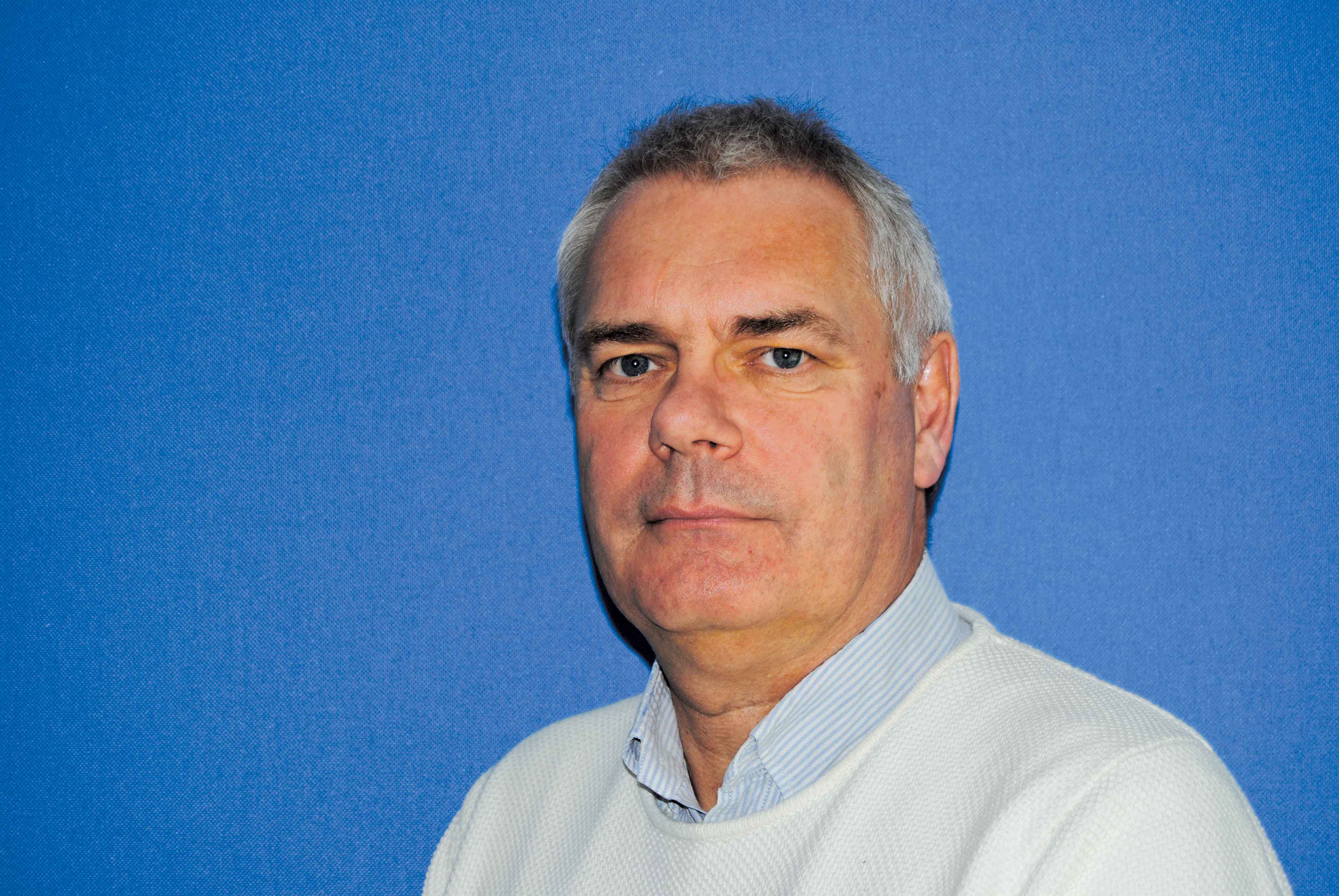
Bjarne Schmidt of Danish Road Directorate
Held every four years, the Eurasphalt and Eurobitume congresses have a reputation for revealing developments that will shape the future of bitumen use on Europe’s roads. This year’s event in Prague promises to uphold that reputation. By Kristina Smith
The list of locations for the7701 Eurobitume and Eurasphalt (E&E) Congresses reads like a traveller’s dream itinerary: Strasbourg, Barcelona, Vienna, Copenhagen, Istanbul. Now the beautiful city of Prague has been added to the list. Between 1-3 June, presenters and delegates from around the world will meet there to share and discuss research and case studies that demonstrate the latest technology and ideas in binder and mix technology.
“This year we wanted to go East,” says Eurobitume’s director general Aimé Xhonneux. “There are big developments in road building in the eastern part of Europe and we are looking forward to welcoming lots of interesting people from the region to our congress.”
The E&E Congresses, held every four years since 1996, typically attract 800 to 1,000 people; at least the same turnout is expected this year. Delegates will come from outside Europe too; China, US, South America and even Australia will all be represented.
As well as the usual diet of heavyweight technical sessions, delegates to the Prague congress will have some non-technical subjects, such as communication and smart management of road infrastructure, to choose from. This is an unusual but considered step for organisers Eurobitume and the5924 European Asphalt Pavement Association (EAPA).
“We have a lot of technical items and subjects but we also wanted to open the congress to other people who are not technical expects but are interested in networking and meeting their customers,” says Xhonneux. “That’s why there are parallel sessions on communication, promotion and financial issues.”
Running parallel sessions for the first time will also allow more of the 245 papers which will be published at the congress to be presented orally. This time, 45 papers will be presented in one of the two congress halls, almost double the proportion of previous years.
Another difference to the running order this year is that the whole of the first day – rather than just the morning – is devoted to keynote speakers, including asset owners and politicians. “We thought it would be good to have some more high-profile speakers to frame the issues and talk about what the pressures are within the industry, what external factors may be influencing things, and what the industry can provide in terms of answers,” says Eurobitume’s Mike Southern who is chair of the technical programme committee.
The theme of the congress, ‘Investing in our greatest asset’, is a message to road owners, says Xhonneux: “In Europe 75% of our goods are carried by road, so we need roads, but yet maintenance of roads is declining,” he says. “I compare this to a fire: when a fire starts, you can extinguish it with a glass of water, but after a few minutes a tank of water is not enough. It is better to maintain roads every year instead of waiting until you have to completely rebuild them.”
There most certainly will be brand new ideas exposed in Prague, assures Beuving. He highlights a new process for recycling, designed so that porous asphalt can be reused in the Netherlands, and also points to the new focus being given to rolling resistance as a way to reduce the energy vehicles use when travelling on roads (See box, p.e9)
The frequency of the Congress also ensures an enthusiastic response to its call for papers. This year there were over 400 abstracts and then 270 papers for E&E’s 250-plus expert reviewers, who are located all around the world, to scrutinise. Every paper is reviewed by two experts who score it for technical content, innovative content and completeness.
“We are hugely grateful to our reviewers, who work in their spare time to ensure that our technical content is of the highest possible level,” says Southern.
Over half of the papers are devoted to what could be seen as E&E’s core topics: binder performance and testing and mixture performance and testing, with two sessions devoted to the first, and one to the second. Another popular topic is warm-mix asphalt (WMA), says Southern: “We have a session devoted to warm-mix asphalt – that’s a heavily-subscribed area.”
Other sessions include recycling, health, safety and environment and maintenance and rehabilitation. This year sustainable development has notably moved up the agenda, with its own session on Friday morning.
“Sustainability is an issue that’s getting more attention, the same for green public procurement,” says Beuving. Green public procurement takes into account durability issues and carbon footprint over a road’s whole lifetime, he explains.
“I think we will see more focus on performance in the future which will affect the way we tender,” says Beuving. “If you want to stimulate innovation and new ideas, the lowest price is not the best way to get innovation.”
In addition to the oral presentations, E&E 2016 will boast an impressive display of poster presentations. As well as the opportunity to visit posters and their presenters during the lunchtime break, the programme organisers have scheduled two devoted sessions: the second slot on Thursday and an evening event the same day where free beer and nibbles will be laid on to tempt people to linger.
“I think that the poster sessions and the number and range of subjects on display will be a highlight of the Congress,” predicts Southern. “We only had 60 in Copenhagen; there will be 160 in Prague. That’s an impressive rise in numbers.”
Another highlight for delegates – and those accompanying them as guests – will undoubtedly be the city of Prague itself. Visits to the medieval Old Town with its astronomical clock, Prague Castle, the much-photographed Charles Bridge and the odd beer garden should all be on the sightseeing ‘to do’ list.
For those who don’t have time for sightseeing, the Congress Dinner on Wednesday evening, free for all registered delegates, exhibitors and accompanying persons, will provide a flavour of Prague. The event at the Žofín Palace promises neo-renaissance architecture, piano and jazz music, and a view over the city.How reduced rolling resistance benefits society
Although we have been measuring rolling resistance of pavements for 25 years, it is much more recently that researchers have started to look at the fuel-saving and CO2-reducing benefits that lower rolling resistance can bring. Denmark has taken a lead in this research, working on a number of programmes with European partners since 2010.
Bjarne Schmidt, research co-ordinator for pavements at the2284 Danish Road Directorate will speak on Wednesday afternoon about a current research project which is looking at the socio-economic aspects of reducing rolling resistance: the roads cost more, but what value do they bring?
“I will be presenting the results at the congress,” says Schmidt. “I believe we could be the first in the world to look at the socio-economic impacts of reducing rolling resistance. It will be interesting to get some feedback on my presentation."
Schmidt’s colleague Matteo Pettinari will be presenting on Friday morning on the technical challenges of developing a low rolling resistance asphalt mix which is also durable.
Spreading the message about WMA
When Matthew Wayman, a senior consultant at the UK’s777 TRL, attended the last 7701 Eurobitume & Euraspalt congress in Istanbul he took away a very clear message about warm-mix asphalt: “In the US, they seemed to have grasped the concept of warm-mix asphalt, whereas we have not really done that in Europe.”
The project that Wayman will be presenting in Prague, during the ‘Warm asphalt mixture’ session on Friday morning was inspired by this message. Funded by8100 Highways England, the 5338 Mineral Products Association and the Refined Bitumen Association, TRL laid WMA on a 220m section of dual carriageway on part of the UK’s strategic network.
“The upshot of the demonstration is that it can be done, there’s not too much to be overcome,” says Wayman. “There are a few hoops you need to jump through, like a departure from the specifications to use the materials, but they aren’t prohibitive.”
Wayman is looking forward to seeing how others have responded to messages they took away from Istanbul. “Because there is a four-year gap between conferences, there’s a lot of scope for people to move things on.
Empirical versus performance specifications
For Pavel Kriz, who heads up Imperial Oil Limited and ExxonMobil’s biggest bitumen research laboratory, in Sarnia, Canada, the Prague congress will be his first chance to speak in his native country, which he left as a youngster. He is no newcomer to Eurobitume and Eurasphalt, however, having presented posters at two previous congresses.
Kriz will be presenting on research that compared the European empirical bitumen specification system with the US performance specification system, SuperPave. “We were able to show that it is not the bitumen rheological test itself that is important in predicting field performance, but ensuring that the tests simulate the conditions that the pavement will face: temperatures, traffic and thermal loading times and stresses, and bitumen ageing,” says Kriz. The motivation for Kriz and his research team in their many research projects is to achieve better performance of roads for longer. “Our goal is to understand the properties and performance of asphalt pavements in the long-term,” says Kriz. “We support long-term sustainability, helping to ensure future generations are not compromised by actions taken today.”
Kriz will be presenting during the first ‘Binder Performance & Testing’ session on Thursday afternoon.
The list of locations for the
“This year we wanted to go East,” says Eurobitume’s director general Aimé Xhonneux. “There are big developments in road building in the eastern part of Europe and we are looking forward to welcoming lots of interesting people from the region to our congress.”
The E&E Congresses, held every four years since 1996, typically attract 800 to 1,000 people; at least the same turnout is expected this year. Delegates will come from outside Europe too; China, US, South America and even Australia will all be represented.
As well as the usual diet of heavyweight technical sessions, delegates to the Prague congress will have some non-technical subjects, such as communication and smart management of road infrastructure, to choose from. This is an unusual but considered step for organisers Eurobitume and the
“We have a lot of technical items and subjects but we also wanted to open the congress to other people who are not technical expects but are interested in networking and meeting their customers,” says Xhonneux. “That’s why there are parallel sessions on communication, promotion and financial issues.”
Running parallel sessions for the first time will also allow more of the 245 papers which will be published at the congress to be presented orally. This time, 45 papers will be presented in one of the two congress halls, almost double the proportion of previous years.
Another difference to the running order this year is that the whole of the first day – rather than just the morning – is devoted to keynote speakers, including asset owners and politicians. “We thought it would be good to have some more high-profile speakers to frame the issues and talk about what the pressures are within the industry, what external factors may be influencing things, and what the industry can provide in terms of answers,” says Eurobitume’s Mike Southern who is chair of the technical programme committee.
The theme of the congress, ‘Investing in our greatest asset’, is a message to road owners, says Xhonneux: “In Europe 75% of our goods are carried by road, so we need roads, but yet maintenance of roads is declining,” he says. “I compare this to a fire: when a fire starts, you can extinguish it with a glass of water, but after a few minutes a tank of water is not enough. It is better to maintain roads every year instead of waiting until you have to completely rebuild them.”
New ideas on the agenda
The four-year gaps between E&E Congresses mean that new ideas and processes in the asphalt industry are developed from one event to the other, says Egbert Beuving, EAPA’s technical director who is well-placed to comment on emerging trends, having attended every E&E Congress since its inception. He remembers porous asphalt being a new idea back in Strasbourg, WMA appearing on the programme in 2000 and describes how topics for research papers at one congress turn into the subject of papers on trials and practice at subsequent events.There most certainly will be brand new ideas exposed in Prague, assures Beuving. He highlights a new process for recycling, designed so that porous asphalt can be reused in the Netherlands, and also points to the new focus being given to rolling resistance as a way to reduce the energy vehicles use when travelling on roads (See box, p.e9)
The frequency of the Congress also ensures an enthusiastic response to its call for papers. This year there were over 400 abstracts and then 270 papers for E&E’s 250-plus expert reviewers, who are located all around the world, to scrutinise. Every paper is reviewed by two experts who score it for technical content, innovative content and completeness.
“We are hugely grateful to our reviewers, who work in their spare time to ensure that our technical content is of the highest possible level,” says Southern.
Over half of the papers are devoted to what could be seen as E&E’s core topics: binder performance and testing and mixture performance and testing, with two sessions devoted to the first, and one to the second. Another popular topic is warm-mix asphalt (WMA), says Southern: “We have a session devoted to warm-mix asphalt – that’s a heavily-subscribed area.”
Other sessions include recycling, health, safety and environment and maintenance and rehabilitation. This year sustainable development has notably moved up the agenda, with its own session on Friday morning.
“Sustainability is an issue that’s getting more attention, the same for green public procurement,” says Beuving. Green public procurement takes into account durability issues and carbon footprint over a road’s whole lifetime, he explains.
“I think we will see more focus on performance in the future which will affect the way we tender,” says Beuving. “If you want to stimulate innovation and new ideas, the lowest price is not the best way to get innovation.”
In addition to the oral presentations, E&E 2016 will boast an impressive display of poster presentations. As well as the opportunity to visit posters and their presenters during the lunchtime break, the programme organisers have scheduled two devoted sessions: the second slot on Thursday and an evening event the same day where free beer and nibbles will be laid on to tempt people to linger.
“I think that the poster sessions and the number and range of subjects on display will be a highlight of the Congress,” predicts Southern. “We only had 60 in Copenhagen; there will be 160 in Prague. That’s an impressive rise in numbers.”
Another highlight for delegates – and those accompanying them as guests – will undoubtedly be the city of Prague itself. Visits to the medieval Old Town with its astronomical clock, Prague Castle, the much-photographed Charles Bridge and the odd beer garden should all be on the sightseeing ‘to do’ list.
For those who don’t have time for sightseeing, the Congress Dinner on Wednesday evening, free for all registered delegates, exhibitors and accompanying persons, will provide a flavour of Prague. The event at the Žofín Palace promises neo-renaissance architecture, piano and jazz music, and a view over the city.How reduced rolling resistance benefits society
Although we have been measuring rolling resistance of pavements for 25 years, it is much more recently that researchers have started to look at the fuel-saving and CO2-reducing benefits that lower rolling resistance can bring. Denmark has taken a lead in this research, working on a number of programmes with European partners since 2010.
Bjarne Schmidt, research co-ordinator for pavements at the
“I will be presenting the results at the congress,” says Schmidt. “I believe we could be the first in the world to look at the socio-economic impacts of reducing rolling resistance. It will be interesting to get some feedback on my presentation."
Schmidt’s colleague Matteo Pettinari will be presenting on Friday morning on the technical challenges of developing a low rolling resistance asphalt mix which is also durable.
Spreading the message about WMA
When Matthew Wayman, a senior consultant at the UK’s
The project that Wayman will be presenting in Prague, during the ‘Warm asphalt mixture’ session on Friday morning was inspired by this message. Funded by
“The upshot of the demonstration is that it can be done, there’s not too much to be overcome,” says Wayman. “There are a few hoops you need to jump through, like a departure from the specifications to use the materials, but they aren’t prohibitive.”
Wayman is looking forward to seeing how others have responded to messages they took away from Istanbul. “Because there is a four-year gap between conferences, there’s a lot of scope for people to move things on.
Empirical versus performance specifications
For Pavel Kriz, who heads up Imperial Oil Limited and ExxonMobil’s biggest bitumen research laboratory, in Sarnia, Canada, the Prague congress will be his first chance to speak in his native country, which he left as a youngster. He is no newcomer to Eurobitume and Eurasphalt, however, having presented posters at two previous congresses.
Kriz will be presenting on research that compared the European empirical bitumen specification system with the US performance specification system, SuperPave. “We were able to show that it is not the bitumen rheological test itself that is important in predicting field performance, but ensuring that the tests simulate the conditions that the pavement will face: temperatures, traffic and thermal loading times and stresses, and bitumen ageing,” says Kriz. The motivation for Kriz and his research team in their many research projects is to achieve better performance of roads for longer. “Our goal is to understand the properties and performance of asphalt pavements in the long-term,” says Kriz. “We support long-term sustainability, helping to ensure future generations are not compromised by actions taken today.”
Kriz will be presenting during the first ‘Binder Performance & Testing’ session on Thursday afternoon.

